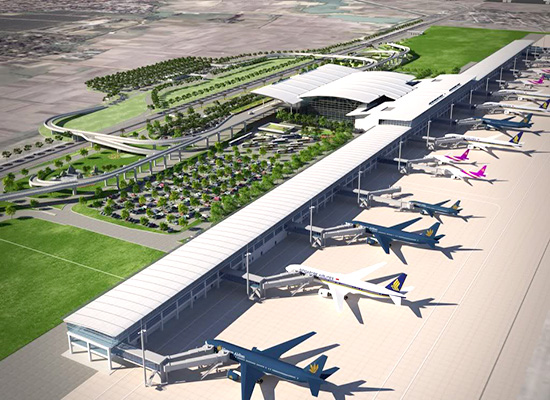It is no secret that Vietnam is a bustling and emerging economy with infrastructure developments on almost every corner. This is due to the multi-million dollar investment projects being ploughed into the country by Japan, China, South Korea and Europe.
With the signing of the ODA (Official Development Assistance) agreement with Japan, Vietnam’s major metropolitan cities, Hanoi and Ho Chi Minh City, are fast-tracking themselves at becoming globally modern and competitive cities with the majority of the investment going into the improvement of transport infrastructure.
With Hanoi being an important centre for politics, industry, culture and higher education as well as being the gateway to the World Heritage Site, Ha Long Bay they have invested in building the new Noi Bai International Airport which became operational on the 4th January. With the construction of Noi Bai, Hanoi is now able to accommodate double the amount of people entering Northern Vietnam. Coupled with the airport the Japanese have helped invest and construct the Nhat Tan Bridge which connects the airport to the Hanoi City Centre paving the way for Northern Vietnam to the rest of the world.

Up until the late eighties, the main means of transport in Hanoi was either by bicycle or trams which suited the flat areas and narrow streets. But since the Nineties, Vietnam has experienced major economic growth leading to a massive boom in property and the development of urban areas which is clearly evident when exploring the City’s outskirts. This economic growth has lead to a surge in motorised transport in the form of scooters and motorbikes.
So for the past ten years since Japan first started the ODA project along with assistance from other nations, they have been working on improving the transport situation in Hanoi with the upgrading and expanding of key parts of the road networks. Included in this was the constructing of intersections around the city as well as the Nga Tu So flyover, Kim Lien underpass intersections and a number of pedestrian bridges, thus paving the way to facilitate the traffic influx in the city. But all of this has come at a price to the environment in the city with the increase of fumes being puffed into the air adding to the already smoggy air.
The government is well aware of this and along with the ODA project, they are in the process of constructing a series of multi-million Dollar metro speed train lines across both Hanoi and Ho Chi Minh City which is set to assist with the ever growing traffic and assisting with the environment. These projects are set to reshape the look of the Cities and add undeniable advantages to the people living in the growing metropolis only set to inject the already booming economy.

Through two feasibility studies conducted by SYSTRA in the mid 2000’s, they identified that the East-West corridor of Hanoi needed to take priority with a large amount of traffic being experienced. The approval of the project has introduced the first metro line in Vietnam at a length of 12.5km which will serve three centres of higher education, the Temple of Literature (an important historical site) and the Hanoi Railway Station. It is hard to miss the progress of these projects with construction sites littering the city. This line will be accompanied by extensions planned to Hoan Mai and Son Tay in the future.
All of this will play a massive role when the Vietnamese government introduces new legislation for foreigners to buy property in the country that is coming into effect on the 1st July 2015 - a huge step in furthering foreign investment in Vietnam that will add value to the already booming property industry. With the Hanoi skyline currently hurdled with cranes and new high rise apartments, the City is on the verge of great things with the value of property set to sky rocket as foreigners look for new cities and countries to invest in, and what’s more attractive than a country that has a projected 5.2% growth in its GDP while other countries experience slowdowns against the resurgent United States.
The details of this will all be revealed as I research and uncover the details about the new laws and how these will affect both foreign companies as well as individuals who look to invest in the emerging Vietnam property market now that the government is opening its doors.
By Robert Sequeira








